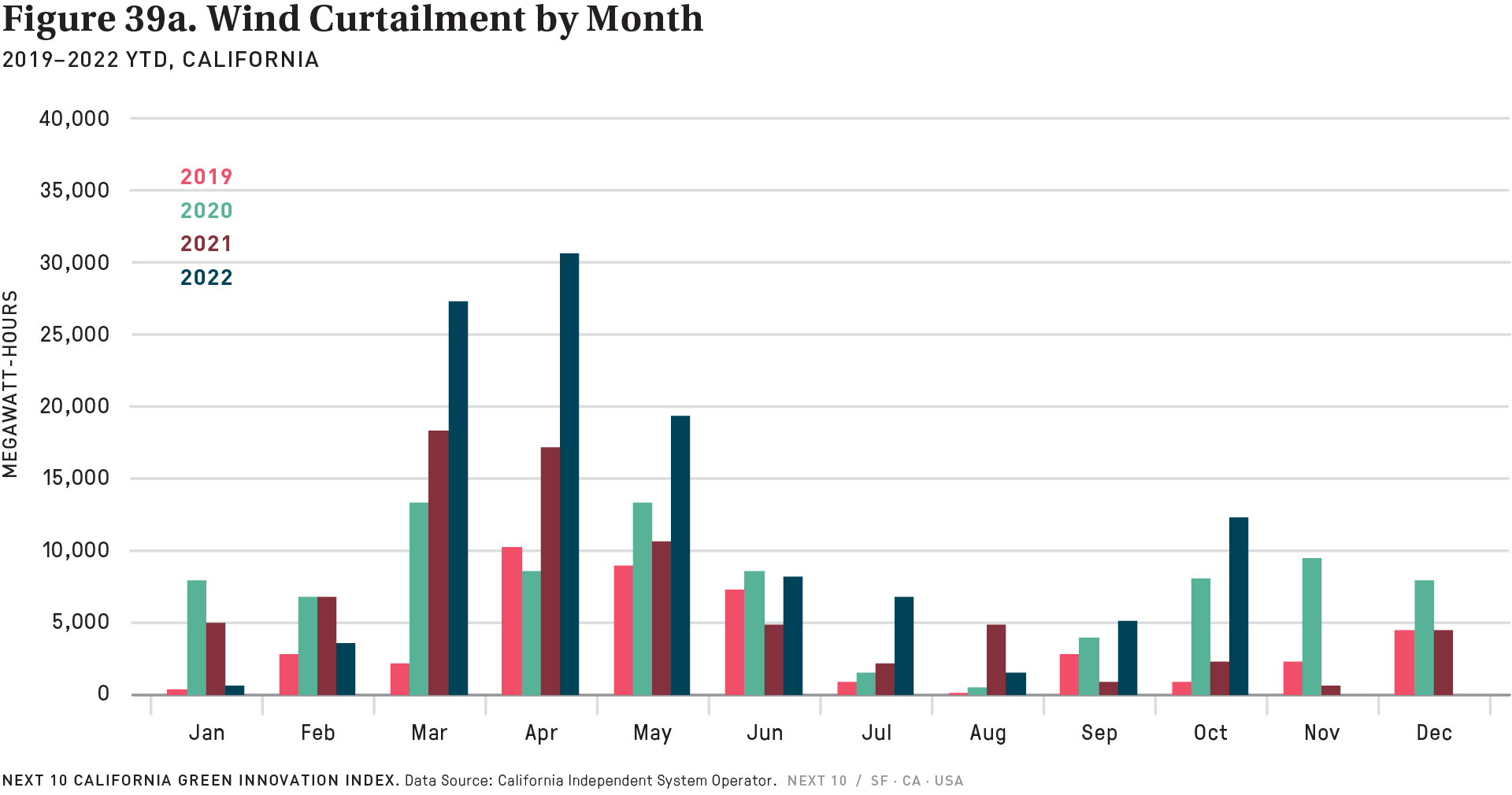Highlight
- There has been an upward trend in California curtailments150 from 2019 to 2022, driven by growth in solar power to meet the state’s aggressive clean energy goals. As more renewables come online, California faces an increasing amount of wind and solar generation curtailment. As of October 2022, curtailments reached a new high—2,356 GWh of electricity generated (115 GWh from wind and 2,241 GWh from solar)—which is 56.6 percent more than the total amount in 2021. Compared to 2021, there has been 57.1 percent more curtailment in solar and 47.5 percent more in wind. Although the total curtailment dropped by 5.2 percent in 2021 for the first time since 2018, the trend did not continue into 2022. Curtailment tends to be at the highest levels from March to June and during the middle of the day (from 10 AM to 2 PM), when there is an oversupply of solar, and at lower levels from September to December.
150 Curtailment is the reduction of output of a renewable resource below what it could have otherwise produced. At times power generators may produce output that is not needed. In the absence of energy storage systems, the surplus may have to be dumped or the power plant output turned down or switched off for a while.
Challenge
- California has been curtailing renewable energy as the ever-rising amount of solar outpaces electricity demand. The growth has slowed during the last two years due to the falling power demand caused by the coronavirus pandemic. In 2021, about 4.2 percent of total generated solar power was curtailed, whereas wind curtailment was less than 1 percent. While curtailments generally only make up a small percentage of the overall load, this is likely to reverse in the next few years. In April 2022, solar and wind curtailment was about three times higher compared to the same period in 2021. The issue is expected to intensify as the state strives to achieve its 50 percent RPS target by 2026. 78 percent of the curtailment in 2022 occurred due to local economic factors, when the market finds a home for low-priced or negative-priced energy. In addition, a large portion of California’s new strategic electricity reliability reserve—a 5,000 MW pool designed to help the state bolster its power grid—will primarily be natural gas-fired generation.151
151 Balaraman, K. (June 13, 2022).‘Not backsliding on clean energy’: Officials say California’s proposed 5 GW reserve could be heavy on gas. Dive Brief; Utility Dive. Retrieved from: https://www.utilitydive.com/news/not-backsliding-on-clean-energy-officials-say-californias-proposed-5-gw/6253236
Opportunity
- Power curtailment is not new, as the power grid has had more supply from power plants than actual demand. While curtailment is often perceived as a negative connotation, it could be more beneficial in the future as the demand for wind and solar will continues to rise. The best strategy might be to curtail renewable energy to grow its value at other moments. The California Public Utilities Commission (CPUC) has opted in to dynamic pricing in California. The demand flexibility measures to be considered in the rulemaking would reduce curtailment of renewable generation while enhancing electric system reliability.152
152 CPUC. CPUC Sets Stage To Enable Widespread Demand Flexibility. July 14, 2022. Retrieved at: https://www.cpuc.ca.gov/news-and-updates/all-news/cpuc-sets-stage-to-enable-widespread-demand-flexibility


